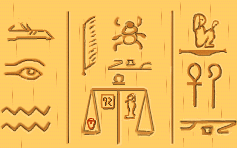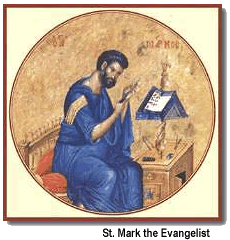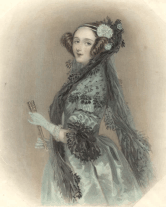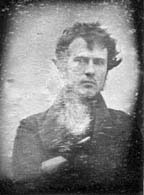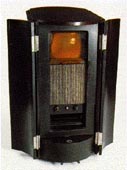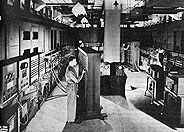|
Timeline of Communication |
|
DATE |
|
||
|
3000 BC |
Sumerian writing system uses pictographs to represent words |
||
|
2900 BC |
Beginnings of Egyptian Hieroglyphic writing |
||
|
1300 BC |
Tortoise Shell and Oracle Bone Writing - the first Chinese writing |
||
|
500 BC |
Papyrus roll used instead of clay tablets for writing. Books on papyrus were rolled on a hardwood stick with an identifying leather tag on one end. As the book was read, the scroll was rolled and unrolled onto another such stick. |
||
|
220 BC |
Chinese Small Seal writing developed - seen on early
coins |
||
|
100 AD |
First Roman books with pages - called Codex |
||
|
105 AD |
Wood block printing and paper is invented by the Chinese |
||
|
641 AD |
|
||
|
1455 |
Johann Gutenberg invents printing press using movable type cast from metal. After a way had been found to cast precisely sized and shaped type, it became possible to arrange the individual letters in a wooden frame bound together with clamps. The first book published using this method was a translation of the Bible in 1455. |
||
|
1755 |
Samuel Johnson's dictionary brings standardized spelling to the English Language. Before that, people made up their own way to spell words. |
||
|
1830s |
|
||
|
1837 |
Invention of Telegraph in Great Britain and the United States. Samuel F. B. Morse and the two British engineers Sir William Cook and Sir Charles Wheatstone developed a method of sending an electronic message over a distance of several miles almost instantaneously. For the first time in history, being a long distance away was no longer a barrier to communication. |
||
|
1837 |
Daguerrotype photography invented - the first
photographs. |
||
|
1861 |
Motion pictures projected onto a screen, giving the world the first movies. They were jerky, but they were movies. |
||
|
1876 |
Dewey Decimal System introduced - a way of organising books in libraries. (University, most community college, and special libraries use the Library of Congress classification system, however.) |
||
|
1877 |
Edweard Muybridge demonstrates high - speed photography, taking photos of a horse and proving that for a split second, it runs with all four feet off the ground at once. |
||
|
1877 |
|
||
|
1877 |
Alexander Graham Bell invents first practical telephone |
||
|
1899 |
First magnetic recordings made by Valdemar Poulsen - forming the basis for modern recording of music. |
||
|
1902 |
|
||
|
1906 |
Lee Deforest invents electronic amplifying tube (triode). This allowed weak signals (for instance when two people were on the phone and a long way apart) to be amplified. This was an important discovery that allowed long distance communication by voice, and you didn't have to rely on the telegraph and Morse Code. |
||
|
1923 |
|
||
|
1926 |
Early movies were silent, with words printed on the screen, and music played in the theatre. The first "Talkies" didn't come out until 1926 when Warner Brothers Studios developed a technology that recorded sound separately from the film on large disks and synchronized the sound and motion picture tracks upon playback. In 1927 the first real talking picture to be played in theatres was released, the Warner Brothers production The Jazz Singer, starring Al Jolson. |
||
|
1940's |
Information science as we know it had its beginnings in the 1940's. The information needs of science, engineering, the military, and logistical management during World War II led to the development of early automated search methods. When the digital computer made its appearance after the war, information could be stored on tape and other digital media. The development of controlled vocabularies and Boolean search techniques made it possible to write search engine programs. These could efficiently search through vast collections of on-line documents to find the little piece of information that was required for a particular need. |
||
|
1946 |
|
||
|
1948 |
1948 Scientists at Bell Telephone labs invent the transistor. The new amplifier was much smaller and more rugged than the vacuum tube amplifier it replaced. There was almost no limit to how small a transistor could be made. The invention of the transistor paved the way for the development of the integrated circuit chip and microelectronics in general. Personal computers as we know them would be impossible without transistors. |
||
|
1971 |
Intel introduces the first microprocessor chip - this is what makes a computer work. |
||
|
1977 |
|
||
|
1984 |
Apple Macintosh computer introduced. The Macintosh was the first computer to come with a graphical user interface and a mouse pointing device as standard equipment. No longer merely a mathematical tool of scientists, banks, and engineers, the micro was becoming the tool of choice for many graphics artists, teachers, instructional designers, librarians, and information managers. It introduced the idea of the computer screen looking like a desktop with its little folders and paper documents. |
||
|
1987 |
Hypercard developed by Bill Atkinson - the idea of things being linked together. (We now use HyperStudio - a development of this programme). |
||
|
1991 |
|
||
|
1992 |
The start of the World Wide Web, or the internet. For the first time, people can access information on computers all over the world, simply and easily. |

